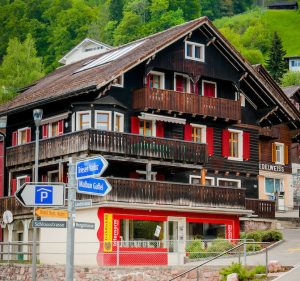Cultural Housing
“Cultural housing” typically refers to housing arrangements or communities designed or organized to cater to a particular group of people’s specific cultural needs or preferences. These arrangements can take various forms and may be established for various reasons, including preserving cultural traditions, fostering a sense of community, and addressing unique cultural requirements. Here are a few examples of cultural housing:
Ethnic or Cultural Neighborhoods: In some cities, there are neighborhoods or districts where a particular ethnic or cultural group has a significant presence. These areas often feature cultural restaurants, businesses, and events catering to that community’s traditions and tastes.
Cultural Centers or Halls: Cultural centers or halls may provide housing accommodations or event spaces specifically designed for cultural gatherings, ceremonies, or celebrations. These spaces are often adorned with cultural symbols, art, and decorations.
Senior Housing for Specific Cultures: Some senior living communities are designed to cater to the cultural preferences of older adults from specific ethnic or cultural backgrounds. They may offer culturally relevant meals, activities, and services.
Religious Housing: Certain religious groups or communities may establish housing arrangements near places of worship to facilitate observing spiritual practices and customs.
Student Housing: Universities and colleges may offer cultural housing options for students who want to live with peers from the same cultural background or are interested in cultural exchange programs.
Cultural Exchange Programs: Some organizations provide housing for participants in cultural exchange programs, such as foreign exchange students, where individuals from different cultures live together to learn from one another.
https://www.youtube.com/watch?v=wdQf0m0ZWZw&pp=ygUQY3VsdHVyYWwgaG91c2luZw%3D%3D
Cultural Preservation: In some cases, cultural housing may be established to preserve traditional ways of life or cultural heritage. This can include lodging for indigenous communities, cultural heritage sites, or living museums.
It’s important to note that cultural housing arrangements should respect local laws and regulations and promote inclusivity and diversity. While these housing options can provide a sense of belonging and cultural continuity, they should not lead to segregation or discrimination. Additionally, individuals and communities should be free to choose whether or not to participate in cultural housing arrangements based on their personal preferences.
Understanding Cultural Housing
Cultural housing is a residential approach beyond mere accommodation; it is a conscious effort to create living environments that respect and integrate various culture, traditions, and backgrounds. This housing model recognizes the importance of diversity and aims to promote inclusivity. Read about Industrial Living Room
The Importance of Cultural Housing
Fostering Cultural Exchange
Cultural housing provides a unique platform for individuals from diverse backgrounds to interact and learn from one another. It encourages the sharing of traditions, languages, and customs, enriching the lives of residents.
Promoting Tolerance and Empathy
Living in a culturally diverse environment helps build tolerance and empathy. Exposure to different perspectives and beliefs leads to a broader understanding of the world, reducing prejudice and fostering harmony.
Challenges in Implementing Cultural Housing
Design and Layout
Creating a culturally inclusive housing design can be challenging. Spaces must accommodate various cultural needs and preferences, from prayer rooms to communal kitchens with specialized equipment.
Conflict Resolution
With diverse culture come diverse viewpoints, which can occasionally lead to conflicts. Effective conflict resolution strategies are crucial to maintaining harmony in cultural housing communities.
The Benefits of Cultural Housing
Stronger Communities
Cultural housing fosters a sense of belonging among residents, leading to stronger and more tightly-knit communities.
Enhanced Learning
Children growing up in culturally diverse housing environments tend to have a broader worldview and better adaptability to various situations, making them more successful in their adult lives.

Implementing Cultural Housing
Inclusive Planning
The first step in creating cultural housing is inclusive planning. Involve residents from different backgrounds in the decision-making process to ensure their needs are met.
Cultural Events
Organize cultural events and festivals within the housing community to celebrate diversity and encourage participation from all residents.
The Future of Cultural Housing
As society evolves, cultural housing will play an increasingly pivotal role in shaping our communities. It represents a step towards a more inclusive and harmonious future where diversity is celebrated. Don’t Forgot to Check Out Website: Peer Life Style

Conclusion
In conclusion, cultural housing is more than an option; it’s a blueprint for a future where diversity is embraced and celebrated. By fostering cultural exchange, promoting tolerance, and building stronger communities, cultural housing paves the way for a brighter tomorrow.
FAQs
What is the primary goal of cultural housing?
The primary goal of cultural housing is to create residential spaces that celebrate diversity and promote inclusivity.
How can conflicts in cultural housing communities be resolved?
Effective conflict resolution strategies, such as open communication and mediation, are essential for maintaining harmony in cultural housing communities.
What benefits do children gain from growing up in culturally diverse housing environments?
Children in culturally diverse housing environments tend to have a broader worldview and better adaptability, which can lead to greater success in adulthood.
How can I get involved in cultural housing initiatives?
You can get involved by participating in cultural events, supporting inclusive planning, and advocating for cultural housing in your community.
What does the future hold for cultural housing?
The future of cultural housing looks promising as it continues to shape more inclusive and harmonious communities, embracing diversity as a strength.

